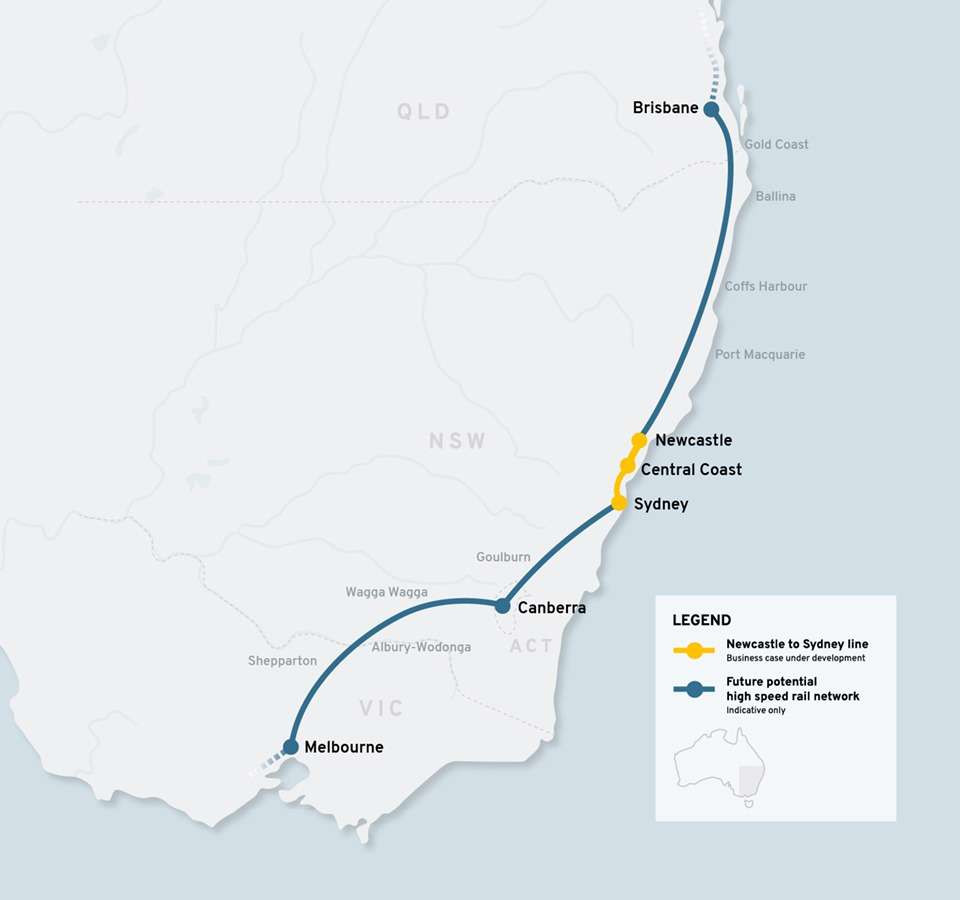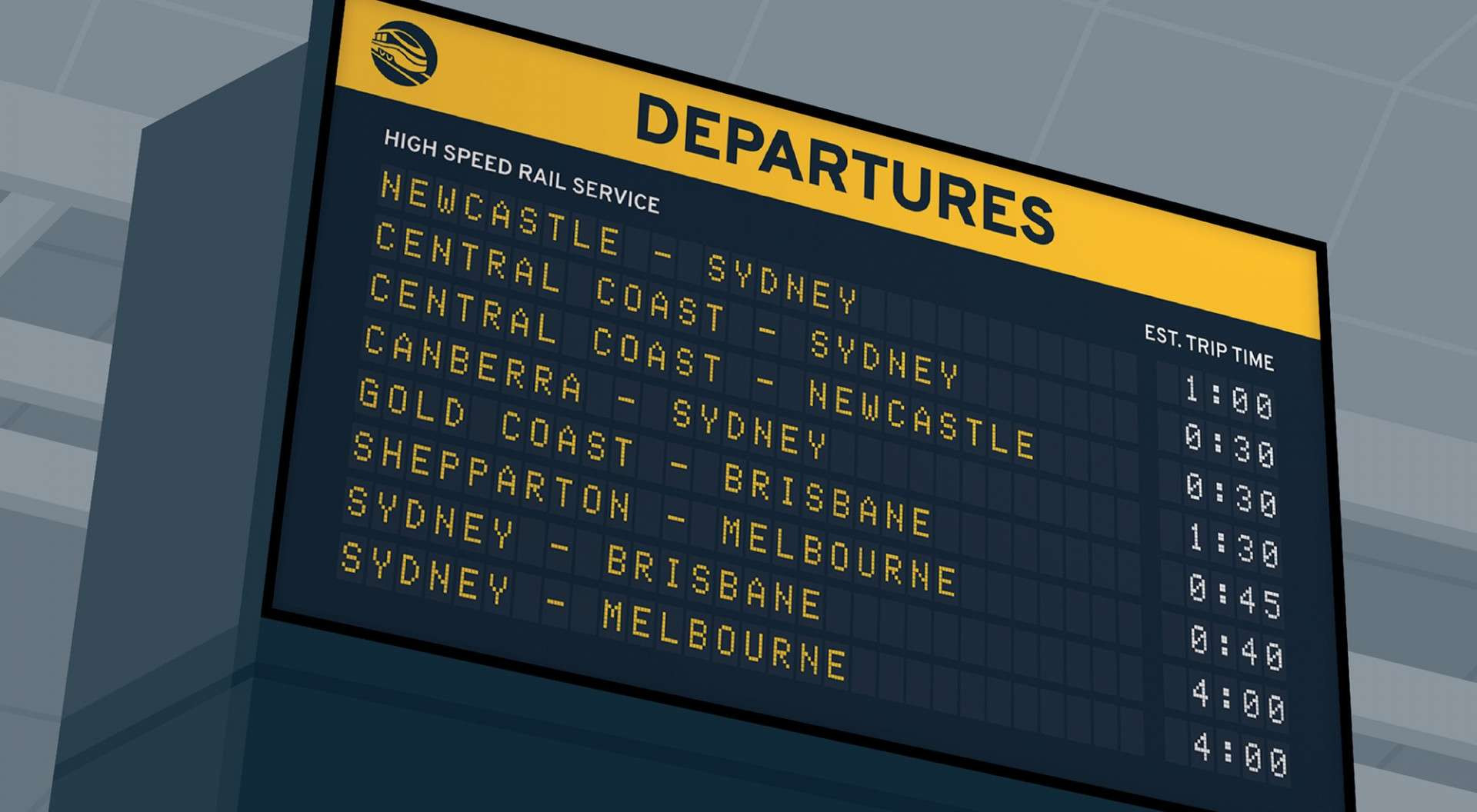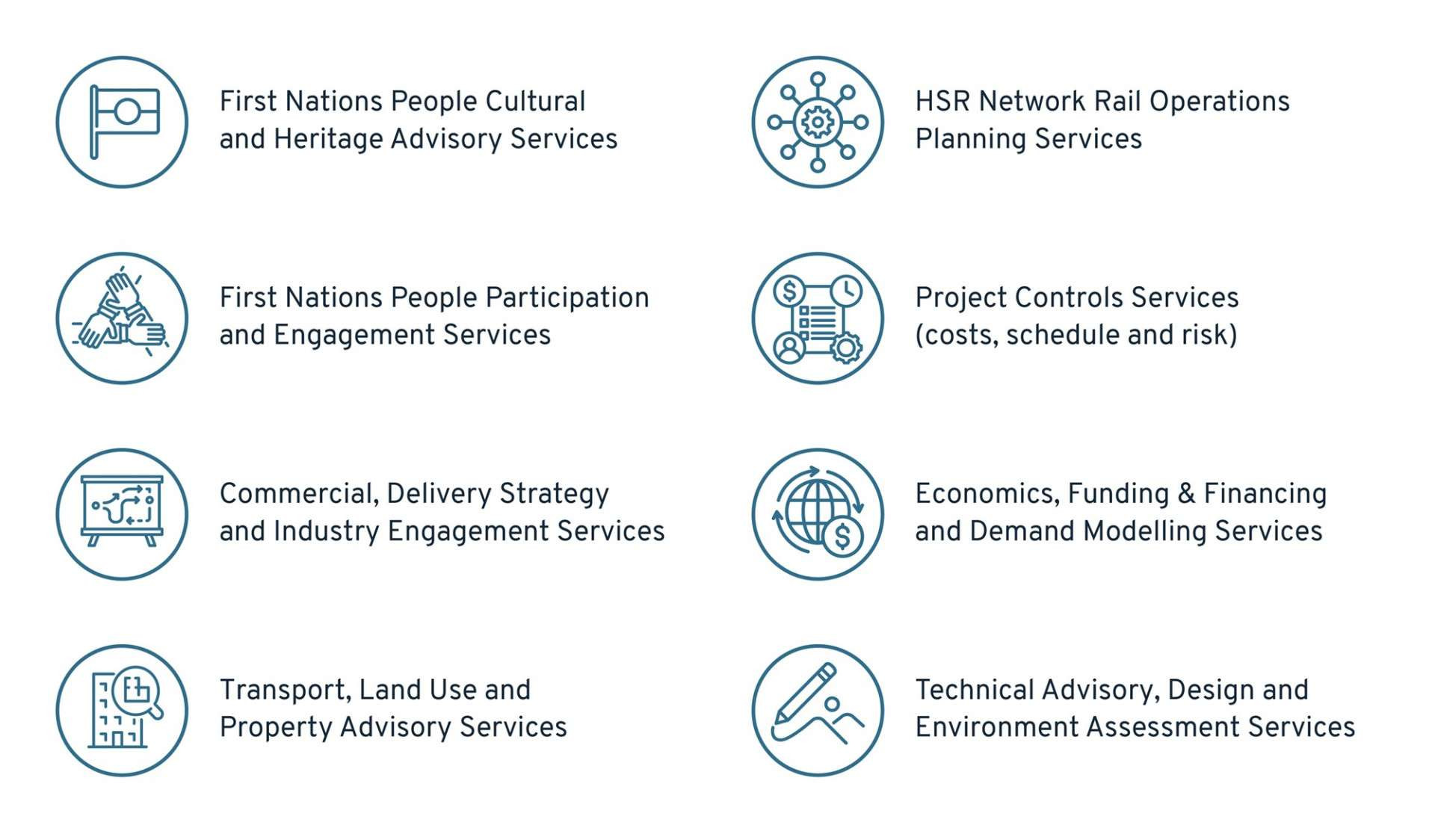
High speed rail in Australia
The Australian Government is planning for a future high speed rail network to connect Brisbane, Sydney, Canberra, Melbourne and regional communities across the east coast of Australia.
The first phase connects Newcastle to Sydney in about one hour on a new dedicated high speed railway. From the Central Coast it will take about 30 minutes to get to Newcastle or to Sydney.
Benefits

Current progress
The Newcastle to Sydney corridor is currently being proposed as the first phase of the east coast high speed rail network that would be delivered.
The Authority presented the business case to the Australian Government in December 2024. The business case is currently being assessed by Infrastructure Australia.
This work was supported by a Product Definition Report which looks at the entire high speed rail network – including an approach to corridor preservation, broader stakeholder and community engagement, and environmental planning.
Connecting Newcastle to Sydney
The first phase of the east coast high speed rail network will connect the two largest cities in New South Wales – Sydney and Newcastle – via the Central Coast.
Key regions and cities within this corridor have strong economic activity.
Stable population growth, especially in Newcastle, is expected to continue and underpin its role as a global gateway.
The population of the Newcastle, Hunter Valley and Central Coast regions is expected to grow by 22 per cent to nearly 1.2 million by the early 2040s.
The Central Coast and Newcastle areas currently support more than 420,000 jobs.
New homes to accommodate growth are expected in major greenfield areas and key centres such as Gosford, Tuggerah/Wyong, Lake Macquarie and Newcastle.
The existing rail network between Newcastle and Sydney is the busiest in Australia.
Currently almost 15 million passengers are transported annually, along with significant volumes of freight.
Passenger services are often disrupted by freight train movements and the network is forecast to reach full capacity by the early 2040s.
The current Newcastle to Sydney journey time by train and car is about 2.5 hours and road travel is often impacted by traffic accidents – with many ‘single points of failure’ existing on the M1 motorway.
There are 91,000 trips every weekday on the road corridor between Newcastle / Lake Macquarie and Sydney.
Quick, convenient, comfortable and reliable services
High speed rail would more than halve existing journey times, with greater reliability.

Generations of opportunities


Connecting Australian regions, cities and communities

Our objectives
Guiding the development and delivery of a high speed rail system on Australia’s east coast.

Why now? And why again?
The 2013 East Coast High Speed Rail Study found high speed rail would produce a positive economic benefit, would be technically feasible, and would have a transformational effect on how most Australians live, work, and travel.
Detailed work by the NSW Government in 2019 on the Newcastle to Sydney corridor confirmed that fast, reliable rail travel between major centres and growth areas supports housing and jobs growth.
Since then, Australia has seen population growth and changing settlement patterns on the east coast, new ways of working as a result of the COVID-19 pandemic and the impact of a changing climate.
A decade of massive rail infrastructure investment across Australia, worth more than $100 billion, has included Sydney Metro, Cross River Rail, Melbourne Metro and Inland Rail.
This has seen the creation of a construction sector skills base that did not exist in Australia previously at this scale, bringing with it world-class construction techniques and a workforce and sector looking for ongoing opportunities and certainty.
Almost 70,000 km of high speed rail is in operation around the world, with a further 30,000 km under construction and more to come.
Our population challenge
Australia’s growth is outpacing many developed countries around the world.
Currently, 21.5 million people live in the mainland east coast states and the ACT.
The east coast population is expected to be 28.5 million by 2051, an increase of 33 per cent.
Work packages
Eight work packages were released to market on 15 March 2024 to support the Authority to deliver the Sydney to Newcastle High Speed Rail Business Case. All eight work packages have been awarded.
An industry briefing was held on Wednesday 27 March 2024 with 350 participants. Additional industry events are being planned for 2025.
The packages included:

Business Case work packages awarded
Following a competitive and open tender process, the Authority engaged industry expert advisers with extensive experience in planning and delivering major infrastructure projects like high speed rail.
The work has been completed and the business case was handed to the Australian Government in December 2024. The business case is being assessed by Infrastructure Australia.




